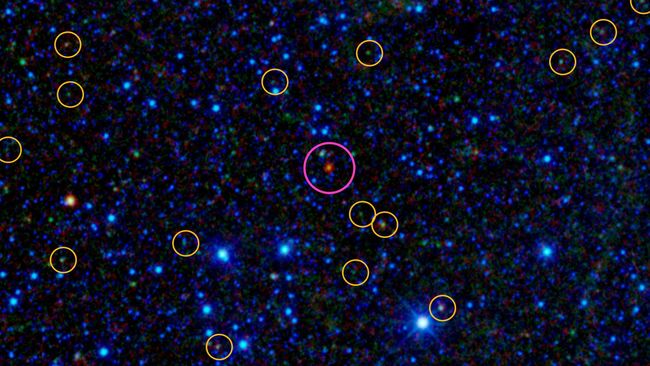7 Potential ‘Alien Megastructures’ Spotted in Our Galaxy Turn Out to Be Something Else
Seven stars in Milky Way Galaxy that could be great alien ‘power source collectors’ called Dyson spheres were discovered by the scientists. New research proposes an alternative explanation: They are merely the ‘cosmic hot DOGs’ in reality.

A group of scientists looked at samples of peculiar stars that are believed to surround Dyson spheres which are structures that aliens use to drain energy from stars. However, the scientists discovered that the “weird stars’ are actually what is considered hot DOGs, hot dust obscured galaxies.
Astronomers began surveying over five million stars within WISE, Gaia and 2MASS sky surveys beginning in the first quarter of 2024 in search of stars with what appeared to be emitting extra infrared light. The researchers pointed out that the observed infrared signal would feed our Sun by getting additional energy thus being considered as potential signature of the Dyson sphere.
Originally conceived in the 1960s by astrophysicist Freeman Dyson, these hypothetical entities would be best described as colossal nested structures that envelop stars with the aim of collecting as much radiant heat as can be possibly managed. According to Dyson’s theory these spheres would be constructed from matter that was extracted from the planets in that star system.
Another purpose could be the modification of a star’s output into usable energy by many millions of times more than what is available to us on this planet while also providing themselves with a nice new shell to reside in. Still, every type of energy collection or usage system has its flaws. Therefore, whereas on the inside of a Dyson sphere, matter gathers emissions from the star, on the outside of this sphere, heat is emitted.
As far as we are concerned what would then appear like a star is a Dyson sphere with more than normal IR emissions. They noticed that within the most recent search, they were able to identify seven stars which are less than 1,000 light years from the Earth and which displayed a massive blow in infrared radiation making them Dyson sphere candidates.
But in a more recent study published to the preprint server arXiv in May, a new team of astronomers examined those seven candidates in greater detail. They found that three are very close to a peculiar kind of galaxy known as a hot dust-obscured galaxy, or “Hot DOG.”
Hot DOGs are embedded in massive, extended dust layers, and warm dust is a very efficient emitter at infrared wavelengths. That is why the astronomers suggest that in cases of three candidates, the extra infrared light is not the star but the view through the warm dust of a Hot DOG.
Concerning four other stars?Due to the similarity of the various wavelengths of light coming from all the seven candidates, the researchers post that these stars are similarly concealed by hot DOGs even if we do not have sufficient information pointing towards these directions to identify the antagonists conclusively.
This new research does not totally quash this concept of advanced civilizations flipping their planets inside out, but it not very useful in the search for ET. That said, at least it reveals just how complex astronomy is and how chance alignments can cause quite extraordinary phenomena to occur. This is especially important as it shows that should we ever find better evidence of aliens, it will take a lot of effort to convince people that they are not merely Hot DOGs.
Do not forget to share your opinion with us to provide you with the best posts !



0 Comments